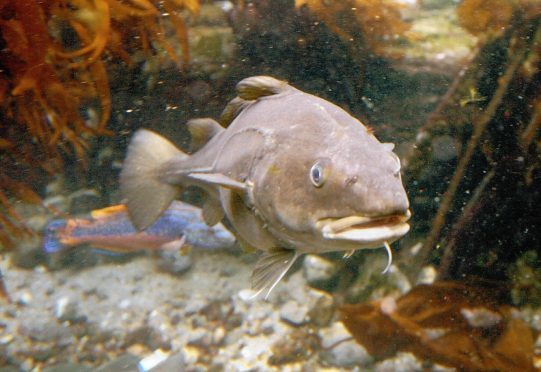The health of key Scottish fishing stocks is closely linked to the type and quality of the seabed, new research findings have confirmed.
Glasgow University led the study into the abundance and size of cod, haddock and whiting in the South Arran Nature Conservation Marine Protected Area in the Firth of Clyde.
It was once an important area for each of these species but stocks are no longer strong enough to support the same amount of fishing
Previously, there was very little known about what makes a good “nursery” area for the most important commercial fish in the early stages of life.
The new research analysed environmental factors impacting on the fish – and showed biodiversity of the seabed affects the abundance and growth of juveniles.
Cod were found to be most abundant in shallow, sheltered areas where the seabed is composed of gravel and pebbles that contained maerl – a protected red algae which supports a particularly high diversity of species.
The researchers also found cod numbers remained fairly constant above gravel and pebble but fell above other seabed types such as sediment, with boulders and sand.
More haddock and whiting were observed over sheltered seabed of sand or mud.
Sophie Elliott, a researcher with the university’s Institute of Biodiversity, Animal Health and Comparative Medicine (IBAHCM), said: “These results demonstrate that measures to protect juvenile fish should be tailored to the species and life stages, and that there may not be general rules which apply evenly within groups of closely-related fish.
“The sustainability of the fishing industry depends on the supply of new fish into fishing grounds to replace those caught.
“In turn, these fish depend on their environment for food and shelter. If we can identify which aspects of the environment are most important to fish, these can be prioritised for protection for the benefit of fisheries and to aid the recovery of stocks.”
IBAHCM senior lecturer David Bailey added: “We’ve shown that both the type and quality of the seabed have powerful effects on the numbers of juvenile fish they support.
“This is important information and should lead to measures to allow nursery areas to recover from past impacts, so they can aid the recovery of fish stocks and the sustainability of fishing.”
Scottish Natural Heritage policy and advice manager David Donnan said: “Current fishery management measures tend to focus on controlling the amount of fish caught by net mesh sizes and so on.
“While these measures remain important, there is increasing recognition that protecting habitats that are crucial to the life history of the target fish should be an important part of the overall management package.”
The study – carried out using baited remotely-operated underwater video equipment – also found that fish change their environment as they get bigger, with haddock and whiting moving to deeper waters as they grow.










